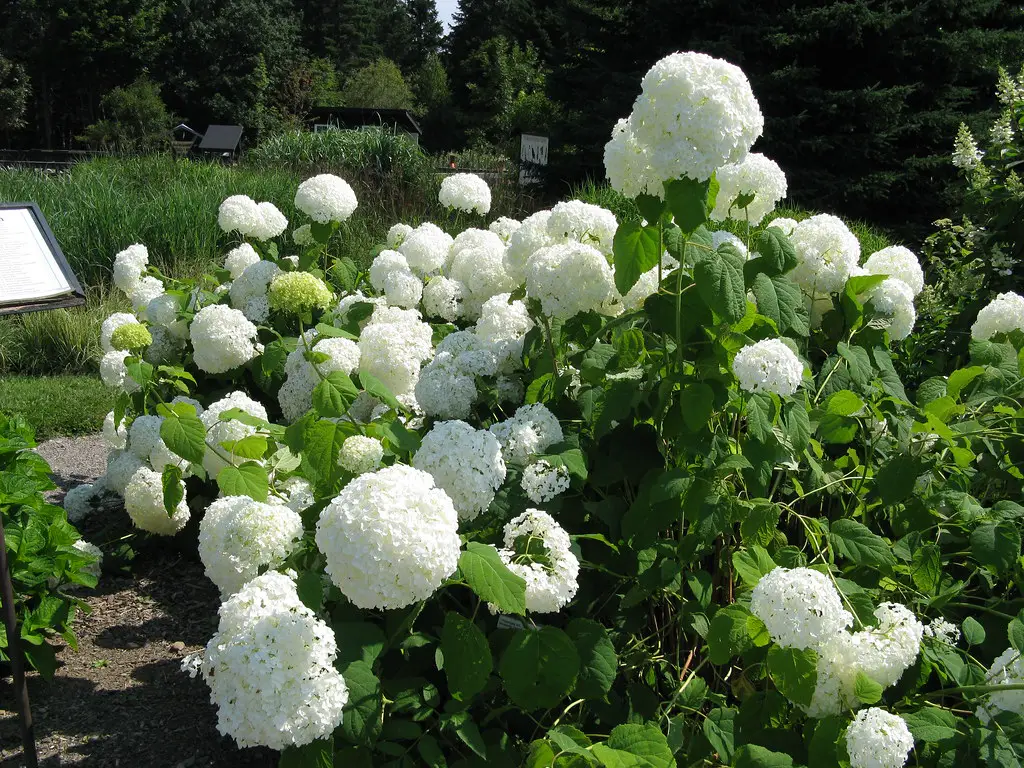The Annabelle Hydrangea is a beautiful flowering shrub that’s well known for its stunning, globe-like, white blooms. These blossoms can reach up to 12 inches in diameter, giving a delicate and elegant appearance to any garden. As a part of the Hydrangea arborescens species, Annabelle thrives in a variety of growing conditions and is often praised for its resilience.
Native to the southeastern United States, Annabelle Hydrangea is a deciduous shrub that is particularly cherished among garden enthusiasts for its ability to bloom repeatedly throughout the summer. The large, snowball-shaped flowers are not only a visual delight but also attract pollinators like butterflies, adding life to the garden.
Though spectacular in appearance, the Annabelle Hydrangea is not complicated to care for. With proper understanding of its light, soil, and watering requirements, gardeners of all experience levels can enjoy this beautiful addition to their gardens.
| Attribute | Details |
|---|---|
| Common Names | Annabelle Hydrangea |
| Botanical Name | Hydrangea arborescens ‘Annabelle’ |
| Family | Hydrangeaceae |
| Plant Type | Deciduous Shrub |
| Mature Size | 3-5 feet tall, 4-6 feet wide |
| Sun Exposure | Full sun to part shade |
| Soil Type | Moist, well-drained soil |
| Hardiness Zones | 3-9 |
| Native Area | Southeastern United States |
Annabelle Hydrangea Care
Caring for Annabelle Hydrangea is generally straightforward, making it an attractive option for gardeners at any level. It enjoys moist, well-drained soil and benefits from mulching to help retain soil moisture. Its adaptable nature allows it to thrive in various lighting conditions.
Pruning is an essential part of care for this plant, mainly to remove dead wood and encourage vigorous growth. Doing so in late winter or early spring ensures a more robust blooming phase. It’s also important to provide protection from strong winds, as the large flower heads can become damaged.
Light Requirement for Annabelle Hydrangea
Annabelle Hydrangea will do well in both full sun and part shade. While it can tolerate a range of lighting conditions, protection from harsh afternoon sun will preserve the delicate blossoms and prevent them from scorching.
Soil Requirements for Annabelle Hydrangea
This hydrangea prefers moist, well-drained soil. Rich, loamy soil with good organic content will provide the nutrients necessary for robust growth. Soil pH is not a significant concern for the white flowers of Annabelle, unlike some other hydrangea varieties.
Water Requirements for Annabelle Hydrangea
Annabelle Hydrangea likes consistent moisture, especially during the first few years after planting. Watering deeply once a week or more during dry spells will ensure that the roots receive adequate hydration.
Temperature and Humidity
Hardy in zones 3-9, Annabelle Hydrangea can handle various temperature ranges. However, protection from late spring frosts can be essential to protect the budding flowers. Humidity is generally not a problem for this hydrangea, but providing consistent water will help in drier climates.
Fertilizer
Fertilizing in late winter or early spring with a balanced slow-release fertilizer will provide the necessary nutrients for flowering. Over-fertilizing should be avoided, as it may lead to more foliage at the expense of blooms.
Pruning Annabelle Hydrangea
Pruning is essential for maintaining the shape and encouraging new growth in Annabelle Hydrangea. Cutting back the old stems to the ground in late winter or early spring will promote more robust blooming.
Propagating Annabelle Hydrangea
Propagation can be done through softwood cuttings in early summer. Cutting a stem with a few leaves attached and planting it in moist, well-draining soil will lead to a new plant.
How To Grow Annabelle Hydrangea From Seed
Growing Annabelle Hydrangea from seed is uncommon and challenging. However, seeds can be sown indoors in the late winter using well-drained soil. Germination requires patience and consistent moisture.
Common Pests & Plant Diseases
Aphids
Aphids may attack the plant; insecticidal soap or neem oil can control them.
Powdery Mildew
Maintain proper spacing and air circulation to prevent this fungal disease.
Common Problems With Annabelle Hydrangea
Drooping Stems
Overly large flower heads can cause drooping stems. Pruning and proper support can help.
Lack of Blooms
Improper pruning or poor soil can lead to a lack of blooms. Correct pruning and soil care are key.
Pro Tips
- Provide support for heavy flower heads to prevent drooping.
- Avoid planting in locations exposed to strong winds.
- Mulch around the base to retain soil moisture.
- Prune older stems to encourage vigorous growth.
- Plant in groups for a visually stunning garden display.




